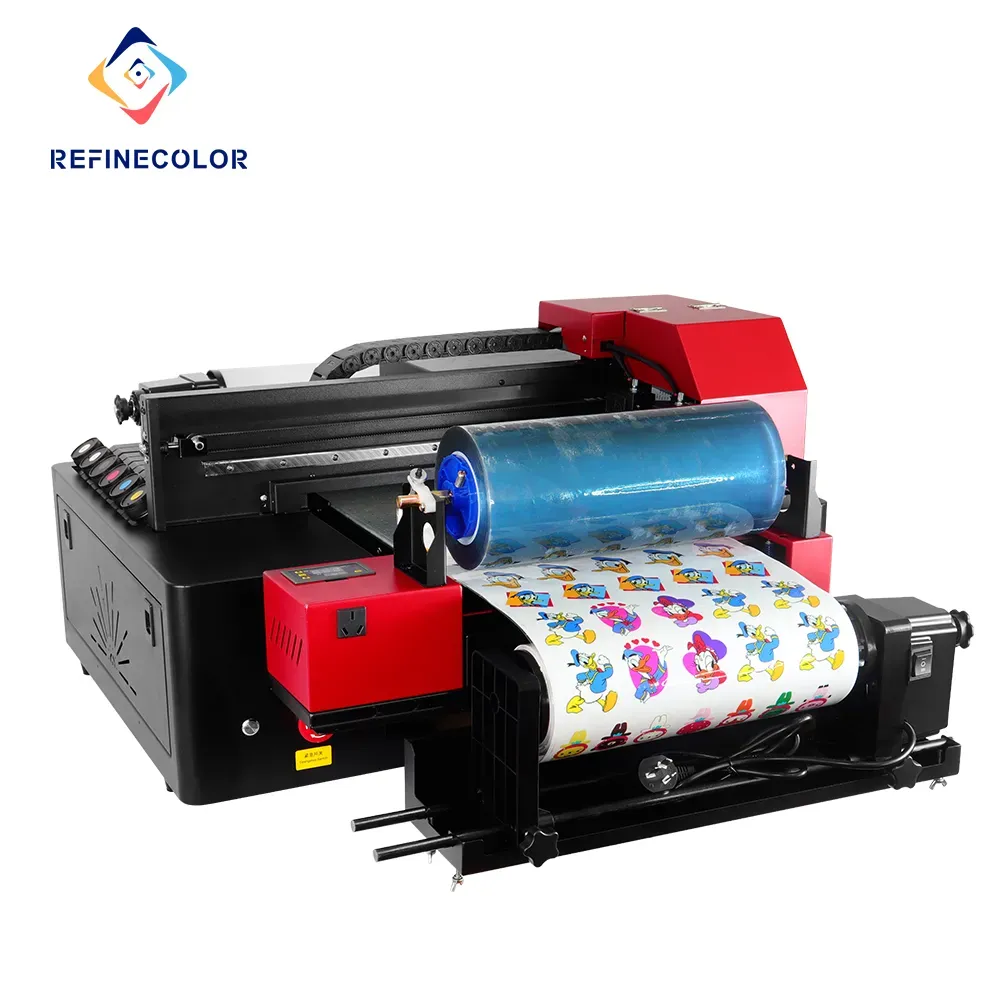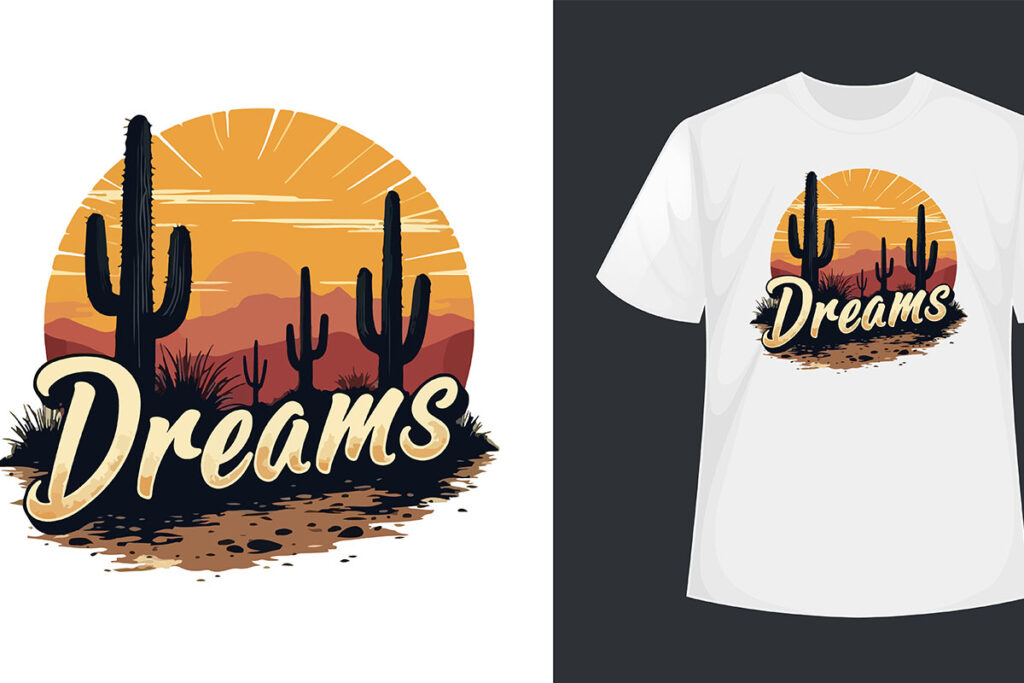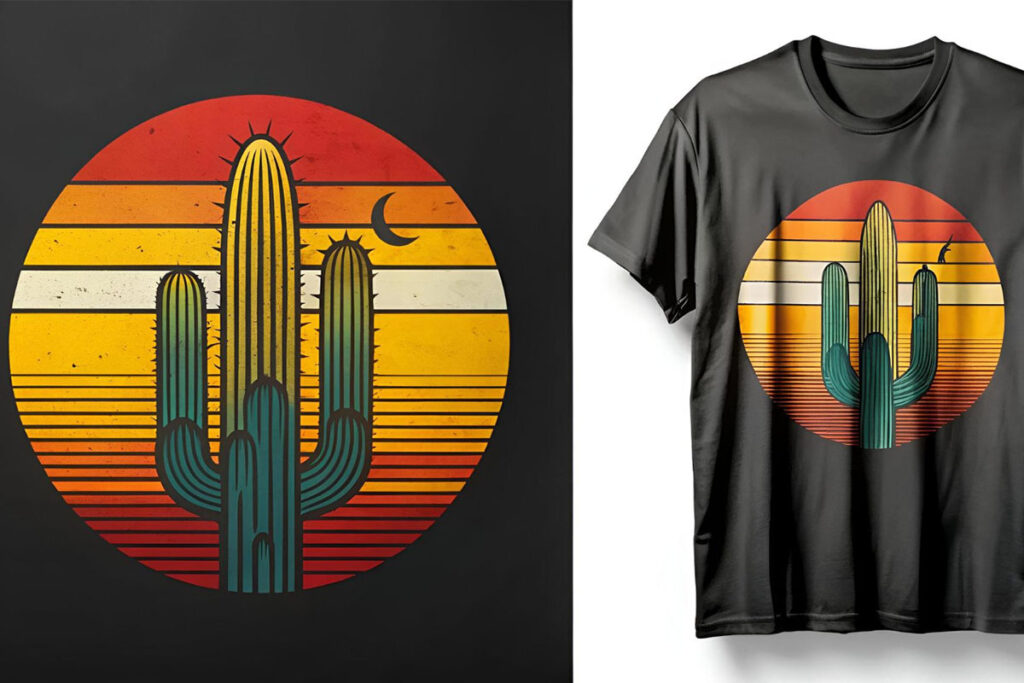UV DTF printing has emerged as a cutting-edge solution in the world of customized printing, revolutionizing how businesses create vibrant and durable designs. This innovative method uses ultraviolet light to cure or dry inks, allowing for high-quality prints across a variety of substrates. From fashion to promotional merchandise, the applications of UV DTF are vast and expanding, capturing the attention of manufacturers and designers alike. As the demand for sustainability in UV DTF grows, companies are harnessing eco-friendly processes that align with environmental goals while still delivering outstanding quality. Join us as we explore the numerous benefits of UV DTF and how it is paving the way for a new level of creativity in printing.
Direct to Film (DTF) printing with a UV twist is quickly gaining traction in various industries due to its adaptability and superb output quality. Often referred to as UV inkjet printing, this advanced technology allows for the application of vibrant inks on diverse materials, making it particularly popular in sectors like textiles and custom packaging solutions. The versatility of this technique, which combines direct printing with transfer methods, supports a multitude of creative endeavors, providing businesses with unique branding opportunities. As sustainable practices become more crucial, the eco-conscious approaches associated with UV DTF printing are helping to shape consumer expectations and preferences. Dive deeper into how this groundbreaking technology serves not only aesthetic goals but also environmental responsibility.
Understanding UV DTF Printing Techniques
UV DTF printing, or Direct to Film printing, is a cutting-edge technology that revolutionizes the way we print designs onto various surfaces. Unlike traditional printing methods that rely on transferring ink directly onto a substrate, UV DTF utilizes ultraviolet light to cure the ink on film before it is transferred. This unique approach enables high-quality and vibrant prints that are both durable and weather-resistant. The versatility of UV DTF printing allows it to be applied to an extensive range of materials such as textiles, plastics, wood, and even metal, making it an excellent choice for a variety of industries.
Another significant advantage of UV DTF printing is its capacity for producing intricate and detailed designs. The technology supports a wider color gamut than traditional methods, allowing for more vivid and complex patterns that can meet the creative demands of designers. Whether it’s for fashion apparel, promotional items, or custom packaging, the ability of UV DTF to print fine details enhances the overall aesthetic appeal of the product, leading to better consumer engagement and satisfaction.
Innovative Applications of UV DTF in Various Industries
The applications of UV DTF printing have expanded dramatically over recent years, particularly within the fashion industry. Designers and brands have embraced this technology to create unique apparel that not only showcases intricate designs but also allows for personalization. Unlike traditional screen printing, which comes with restrictions on the number of colors and designs for small runs, UV DTF can effortlessly produce multi-colored and customized prints on-demand, catering perfectly to the growing trend of bespoke fashion.
Beyond fashion, UV DTF is also revolutionizing the promotional products sector. Businesses are increasingly utilizing this technology to produce eye-catching products such as branded bags, promotional giveaways, and corporate merchandise. The high-resolution prints and durability offer brands the chance to make a lasting impression, while the cost-effective nature of UV DTF printing supports quick production times that are essential for campaign launches.
Benefits of Utilizing UV DTF Printing
The benefits of UV DTF printing extend beyond aesthetic appeal. One of the most notable advantages is the durability of prints produced through this method. UV DTF technology ensures that prints are resistant to fading, scratching, and weathering, which is crucial for products that will be used outdoors or exposed to harsh conditions. This resilience not only enhances product longevity but also reduces the need for frequent replacements, making it an economically favorable option for businesses.
Sustainability is another critical advantage associated with UV DTF printing. Many manufacturers are now focusing on using eco-friendly inks and materials, responding to the increasing consumer demand for sustainable products. By minimizing waste and utilizing energy-efficient processes, UV DTF presents a more environmentally responsible printing option. This commitment to sustainability resonates with modern consumers who prioritize eco-conscious choices, positioning brands that adopt UV DTF as leaders in responsible innovation.
Sustainability in UV DTF Printing Practices
Sustainability is becoming an essential pillar in the world of printing, and UV DTF technology is at the forefront of this movement. Many companies are adopting UV DTF processes that incorporate eco-friendly inks and materials, significantly reducing the environmental impact of their operations. For instance, the use of water-based inks in UV DTF printing not only minimizes harmful emissions but also enhances the safety of the printing process, making it much more sustainable compared to traditional solvent-based methods.
Furthermore, the efficiency of UV DTF printing helps mitigate waste. The ability to print directly onto materials without the need for excessive setup and messy cleanup reduces the overall material waste during production. As businesses strive to align with sustainable practices to appeal to environmentally conscious consumers, the move towards UV DTF technologies is increasingly seen as a positive step forward in mitigating the ecological footprint of printing operations.
Exploring Challenges in UV DTF Adoption
Despite the numerous advantages, the adoption of UV DTF printing comes with its own set of challenges. One significant hurdle is the initial investment required to acquire high-quality UV DTF printers, which can be a barrier for small or medium-sized businesses. The cost associated with purchasing and maintaining this advanced technology may deter some organizations from making the switch from traditional printing methods, despite the long-term cost savings and productivity enhancements.
In addition to upfront costs, there is a continuous need for education and training when transitioning to UV DTF processes. Operators must be well-versed in the technical aspects of the printing equipment, ink types, and materials to effectively produce high-quality results. As technologies evolve, staying updated on advancements and best practices in UV DTF printing becomes necessary, requiring companies to invest time and resources in training their workforce.
Future Trends in UV DTF Technology
The future of UV DTF printing technology looks promising as advancements continue to emerge. Innovations in printer design, ink formulations, and curing techniques are expected to enhance the speed and quality of UV DTF applications. The introduction of faster LED curing systems and improved ink compositions that yield brighter colors and include more sustainable options are paving the way for greater efficiency and eco-friendliness in the printing industry.
As the demand for custom and personalized products increases, UV DTF is well-positioned to thrive. The ability to create intricate, vibrant designs quickly and on-demand is a significant asset in fast-paced markets. Businesses that invest in UV DTF technology now can capitalize on future trends such as on-demand manufacturing, personalized merchandising, and innovative packaging solutions, ensuring their relevance in an ever-evolving marketplace.
Frequently Asked Questions
What is UV DTF printing and how does it work?
UV DTF printing, or Ultraviolet Direct to Film printing, is an innovative process that involves printing UV inks onto a special transfer film. This film is then heat-pressed onto various substrates, curing the inks instantly with ultraviolet light. This technology allows for high-quality, durable prints suitable for diverse materials such as textiles, plastics, and metals.
What are the key benefits of UV DTF printing?
The benefits of UV DTF printing include exceptional print durability, vibrant colors, and the ability to print on a wide variety of surfaces. Additionally, this technology supports eco-friendly practices by utilizing less hazardous inks and reducing waste, making it a sustainable choice for businesses aiming to minimize their environmental impact.
How is UV DTF technology applied in fashion?
In the fashion industry, UV DTF technology enables designers to create custom apparel with intricate and colorful designs that stand out. This method allows for flexibility in small production runs and personalized items, meeting the unique demands of today’s consumers who prefer customized clothing options.
What are some applications of UV DTF printing beyond textiles?
Beyond textiles, UV DTF printing is extensively used in creating promotional products, packaging, and even signage. Businesses leverage this technology for a broad range of customizable items, including mugs, tote bags, and unique packaging designs that enhance brand visibility and appeal.
How does sustainability play a role in UV DTF printing?
Sustainability in UV DTF printing is achieved through the use of eco-friendly inks and processes that aim to reduce waste. As businesses become more environmentally conscious, adopting UV DTF printing aligns with their goals to create products that not only meet consumer demand for customization but also adhere to sustainable practices.
What are some challenges associated with UV DTF printing?
Challenges in UV DTF printing include the initial investment in high-quality printers and the need for skilled operators to maintain and utilize the technology effectively. Ongoing education is crucial, especially as new materials and inks are introduced, but advancements in technology continue to address these barriers, making UV DTF more accessible.
| Industry/Application | Benefits | Recent Developments |
|---|---|---|
| Textiles and Fashion | Custom designs, fabric variety | Personalized clothing and small production runs |
| Promotional Products | Vibrant designs, quick production | Customizable items for branding |
| Packaging | High-resolution graphics, versatility | Short runs and custom packaging |
Summary
UV DTF (Direct to Film) printing is redefining the landscape of modern printing technology with its remarkable versatility across multiple industries. From textiles and fashion to promotional products and packaging, this innovative method allows businesses to create high-quality, durable prints with stunning colors. The growing focus on sustainability and advancements in printing equipment only enhance its appeal, encouraging a shift towards eco-friendly practices. As a result, UV DTF is not just a printing technique; it is a catalyst for creative expression and market differentiation, making it a vital consideration for companies aiming to thrive in today’s competitive environment.



